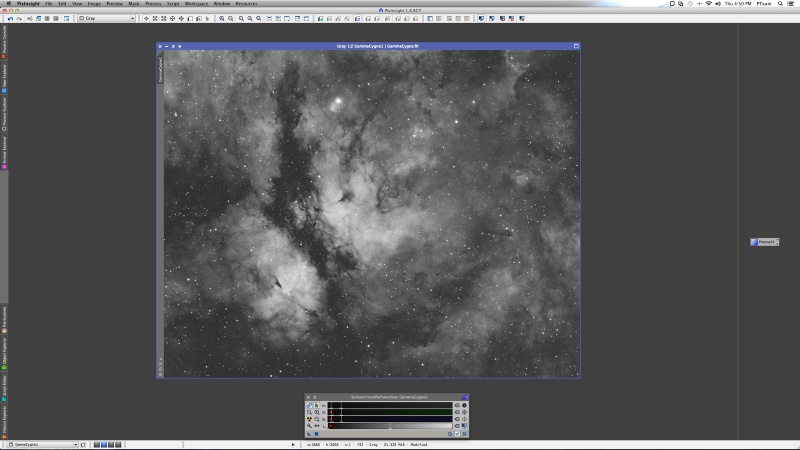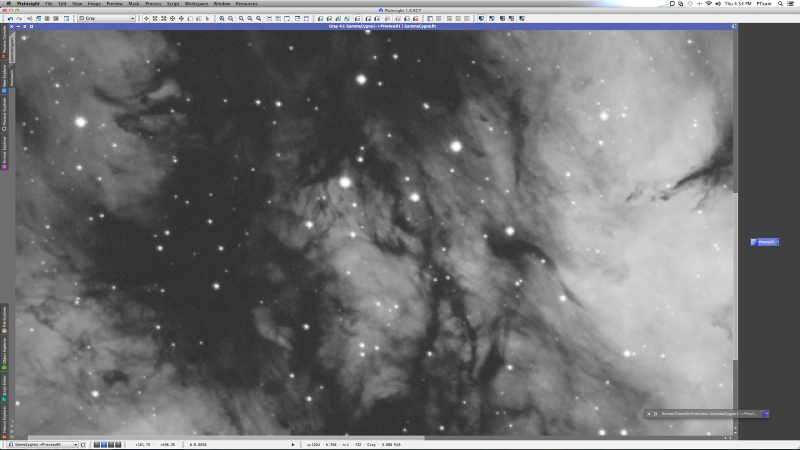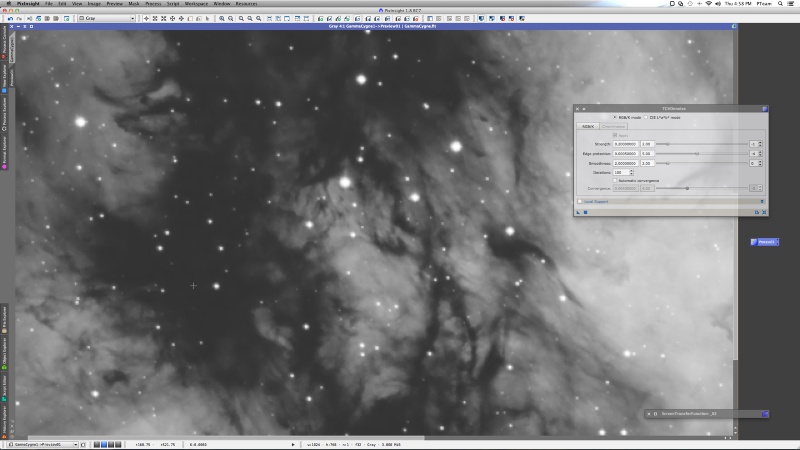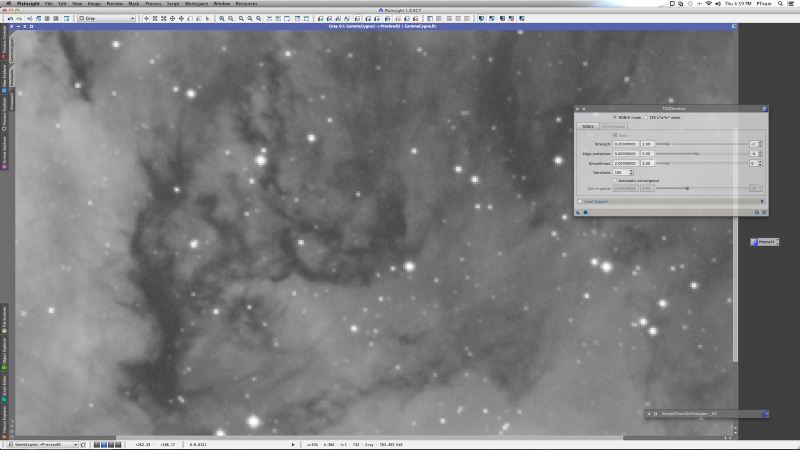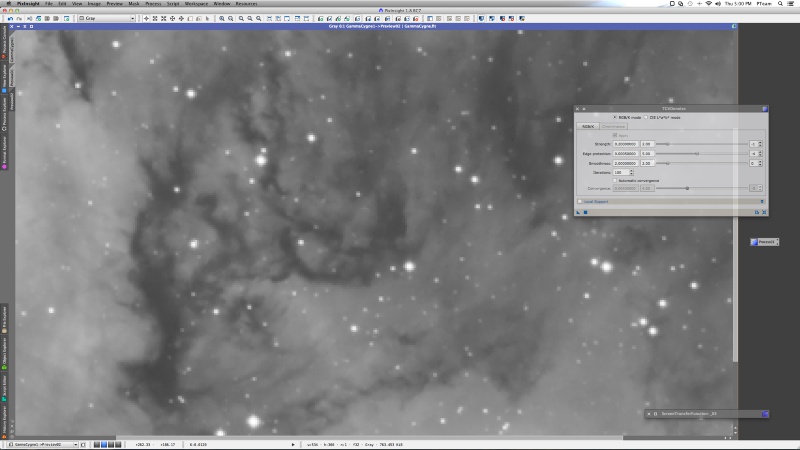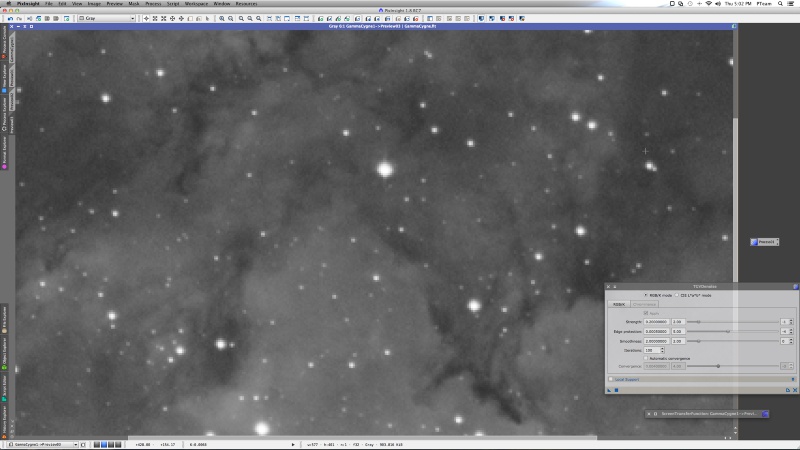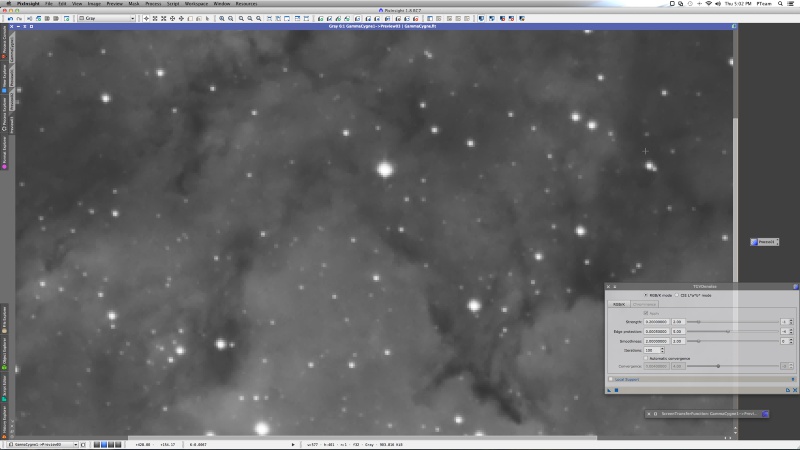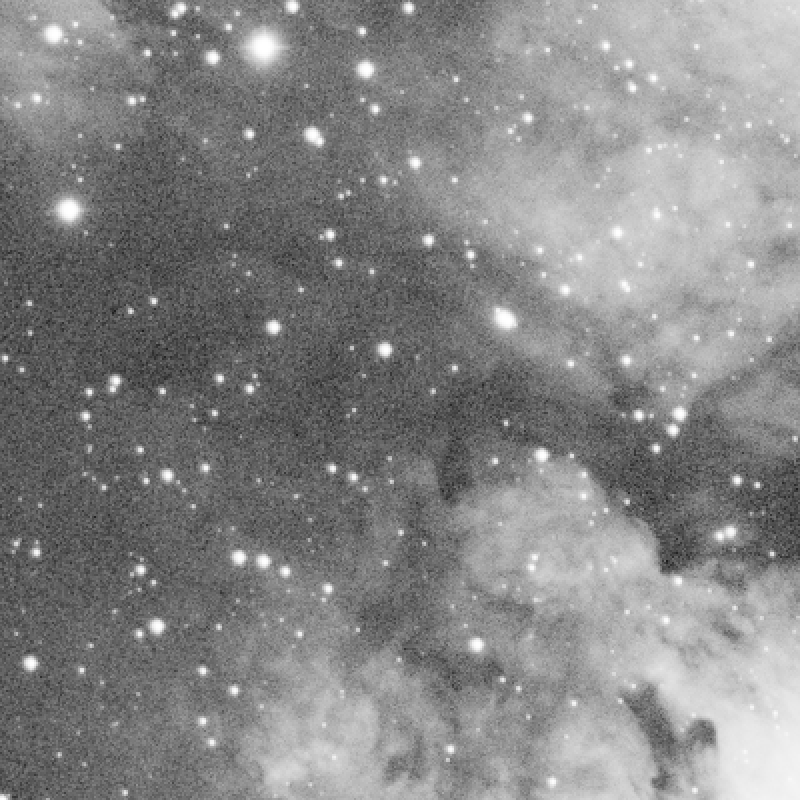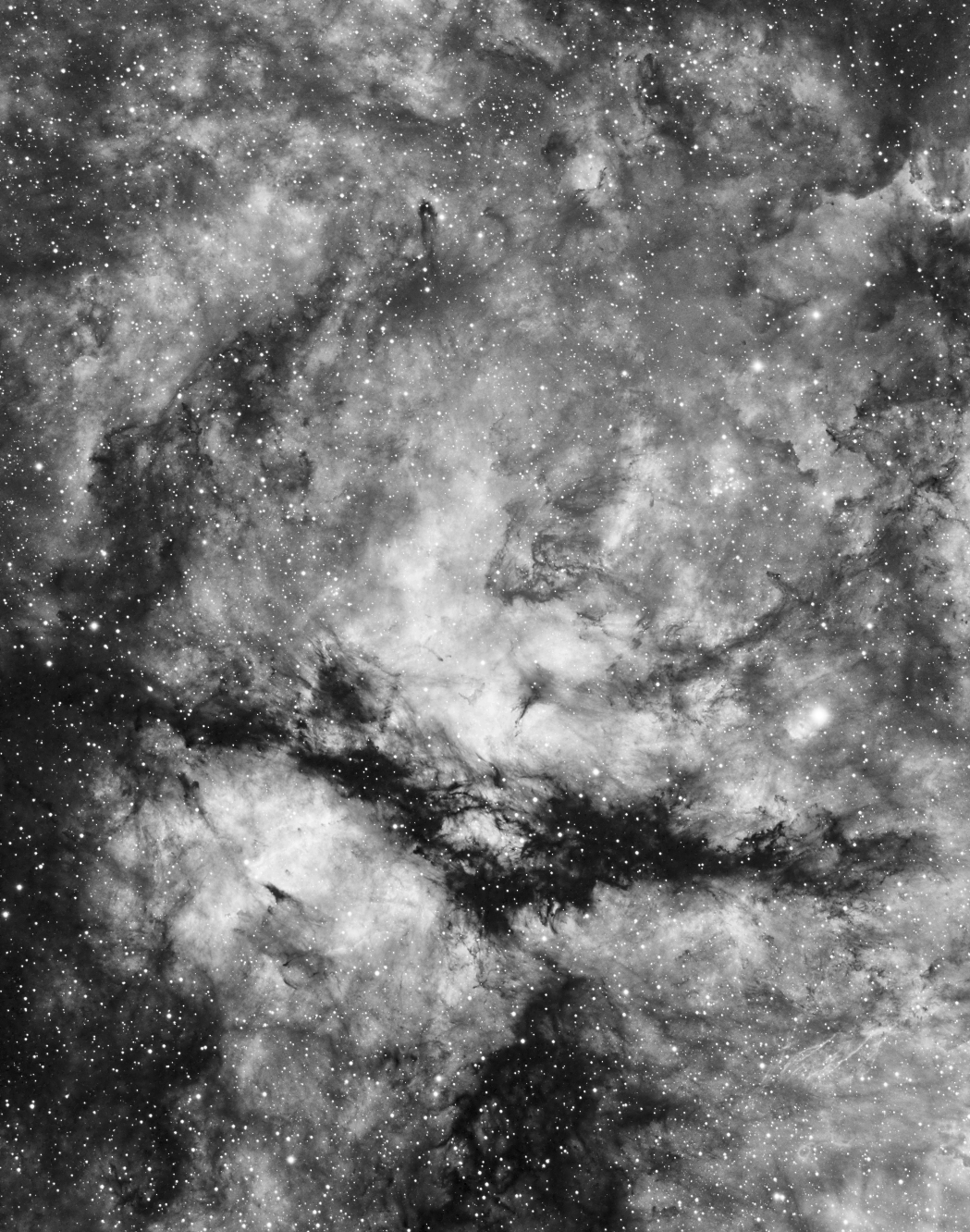Philippe Bernhard has kindly uploaded a set of six linear images for us to test TGVDenoise out. In this first example I'm going to show how easily we can achieve a very good noise reduction when the data are excellent.
The original image is an integration of 20 light frames of the Gamma Cygni region:
The six images that Philippe has uploaded are of excellent quality, as you'll see in the next screenshots. This is the linear output of the ImageIntegration process, so we need ScreenTransferFunction (STF) in order to see the image on the screen. For newbie users, the STF tool in PixInsight applies a histogram transformation to the data that are sent to the screen, but does not change the actual image. This way we can work with linear images without stretching them. This is very important because data linearity is necessary for some essential image processing algorithms and techniques, such as color calibration, background modeling and deconvolution. There are also some tools that can be applied to both linear and nonlinear images, but perform much better with linear data.
For noise reduction of linear images, it is very important to carefully adjust STF settings, so that we can see the background, and at the same time, bright areas without saturation. Usually the automatic STF stretch is too aggressive for this purpose. The next screenshot shows the original image enlarged 4:1 with the custom STF that I've used in this example.
And without more preambles, this is the same area after TGVDenoise:
As you probably have already discovered if you have tried out this tool, the default TGVDenoise parameters have been optimized for nonlinear images. For linear images, the default parameters are way too aggressive, and usually have to be lowered by one order of magnitude or even more.
Something that will cause some surprise is the fact that I haven't used a local support in this example. This will give you a better idea of the power of TGVDenoise: For images with relatively high SNR, this tool is able to remove virtually all of the noise, preserving significant structures remarkably well without any help from external data.
Once you get some experience with the tool, finding the correct parameters becomes very easy, especially for high-quality data. It has taken me about five minutes to achieve the noise reduction that I was looking for with this image. I'll show you the result on two additional previews for comparison.
Original image:
After TGVDenoise:
Original image:
After TGVDenoise:
And as usual, some crops of special interest zoomed 3:1 (left: original image, right: after TGVDenoise).
Now this image can be printed at a size of 1 meter by 80 cm at 300 dpi without problems (about 40 x 30 inches), and navigating through it onscreen zoomed 4x is a real joy.
Thank you Philippe for allowing me to work with your nice data.
The original image is an integration of 20 light frames of the Gamma Cygni region:
The six images that Philippe has uploaded are of excellent quality, as you'll see in the next screenshots. This is the linear output of the ImageIntegration process, so we need ScreenTransferFunction (STF) in order to see the image on the screen. For newbie users, the STF tool in PixInsight applies a histogram transformation to the data that are sent to the screen, but does not change the actual image. This way we can work with linear images without stretching them. This is very important because data linearity is necessary for some essential image processing algorithms and techniques, such as color calibration, background modeling and deconvolution. There are also some tools that can be applied to both linear and nonlinear images, but perform much better with linear data.
For noise reduction of linear images, it is very important to carefully adjust STF settings, so that we can see the background, and at the same time, bright areas without saturation. Usually the automatic STF stretch is too aggressive for this purpose. The next screenshot shows the original image enlarged 4:1 with the custom STF that I've used in this example.
And without more preambles, this is the same area after TGVDenoise:
As you probably have already discovered if you have tried out this tool, the default TGVDenoise parameters have been optimized for nonlinear images. For linear images, the default parameters are way too aggressive, and usually have to be lowered by one order of magnitude or even more.
Something that will cause some surprise is the fact that I haven't used a local support in this example. This will give you a better idea of the power of TGVDenoise: For images with relatively high SNR, this tool is able to remove virtually all of the noise, preserving significant structures remarkably well without any help from external data.
Once you get some experience with the tool, finding the correct parameters becomes very easy, especially for high-quality data. It has taken me about five minutes to achieve the noise reduction that I was looking for with this image. I'll show you the result on two additional previews for comparison.
Original image:
After TGVDenoise:
Original image:
After TGVDenoise:
And as usual, some crops of special interest zoomed 3:1 (left: original image, right: after TGVDenoise).

| 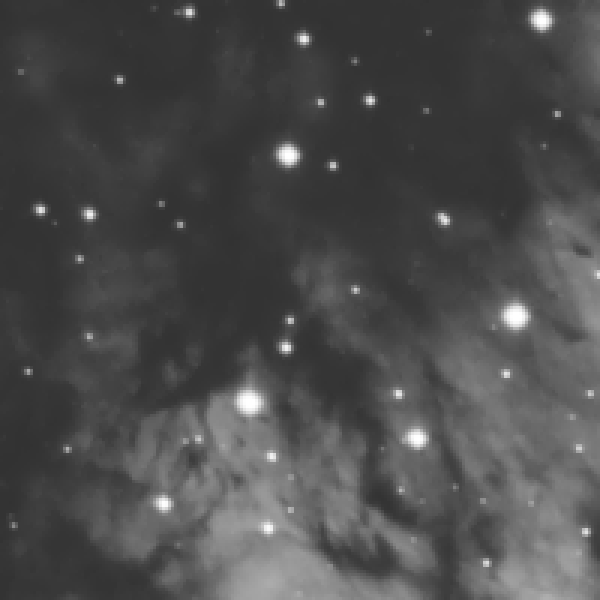
|
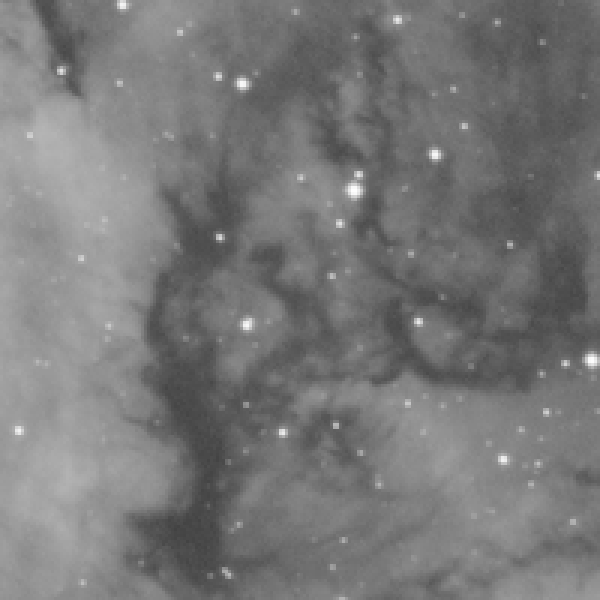
| 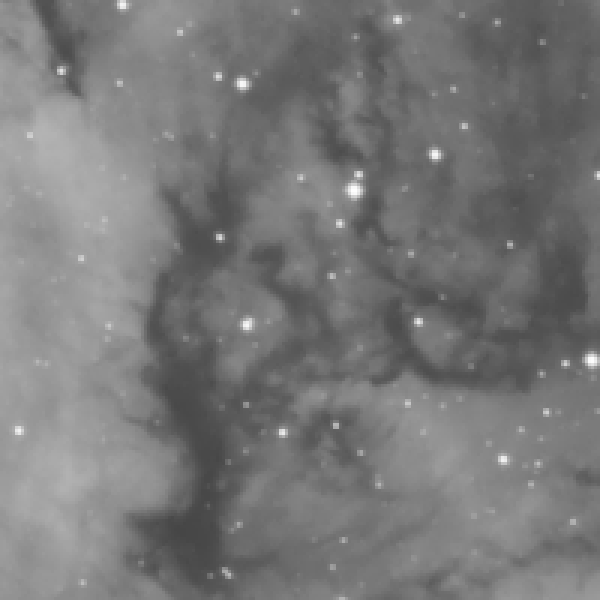
|
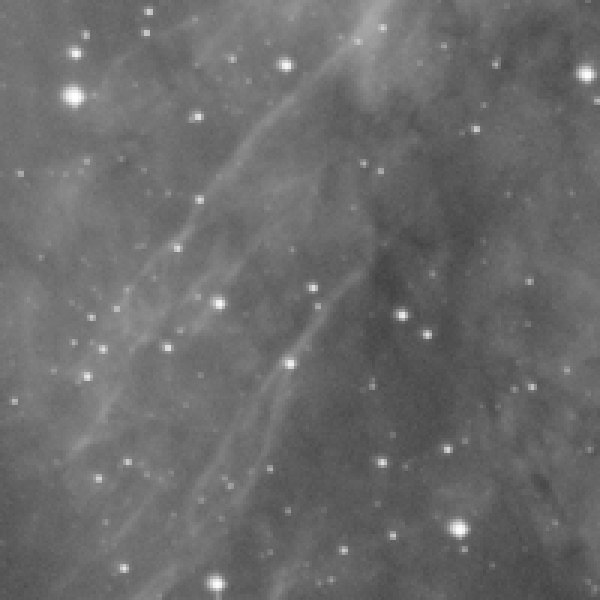
| 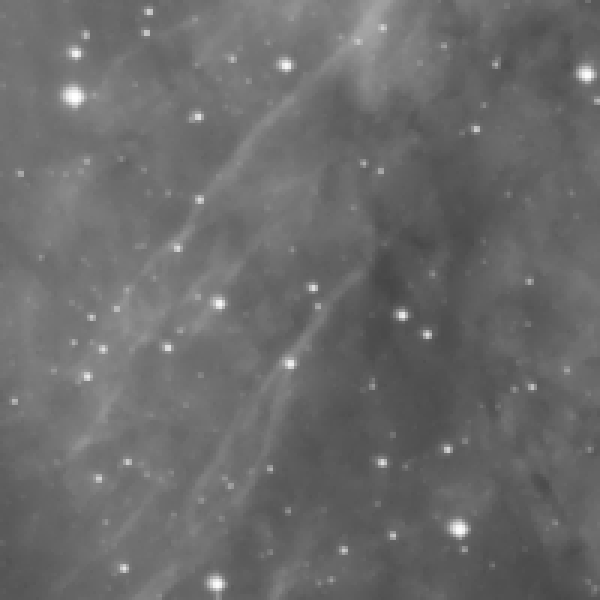
|
Now this image can be printed at a size of 1 meter by 80 cm at 300 dpi without problems (about 40 x 30 inches), and navigating through it onscreen zoomed 4x is a real joy.
Thank you Philippe for allowing me to work with your nice data.

